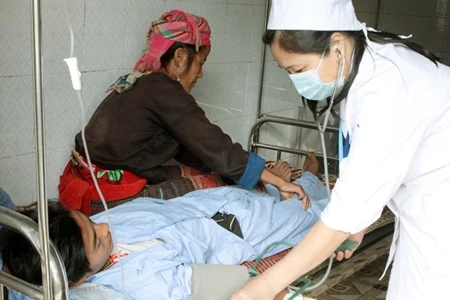The northern mountainous province of Son La targets to keep the rate of HIV/AIDS infections in the community below 0.65 percent from 2016-2017, according to the provincial People’s Committee.
Within the period, 50 percent of the local population is expected to have a basic understanding of HIV/AIDS and 90 percent of people living with HIV will be detected and receiving treatment.
In order to realise the targets, the province has actively implemented a programme to control the HIV infection rate in 86 out of 204 communes.
Under the programme, nearly 3,000 people with HIV received ARV (antiretroviral) treatment and another 757 drug users were treated with methadone.
The province is continuing to implement the United Nations’ programme on controlling and preventing HIV/AIDS.
Specific action plans have been designed through joint efforts of local authorities, sectors and levels in a bid to curb HIV/AIDS infections.
By August this year, the province had roughly 13,200 recorded HIV infected cases, only 39 percent of whom were receiving ARV treatment.
In August, 347 new HIV carriers were discovered in the province.
According to the Ministry of Health, Vietnam currently has around 260,000 people living with HIV and some 12,000 new HIV infections are detected each year. Of those living with HIV, only around 90,000 are receiving antiretroviral (ARV) treatment.
As of September 2014, Vietnam had 220,000 HIV cases and nearly 70,000 fatalities.
According to the World Health Organisation, the use of ARV therapy, particularly in the early stage of the disease, can lead to substantial reductions in the rates of death and suffering.
ARV treatment has also been proven to reduce the rate of new infections to below 2-4 percent while easing the financial burden for families with HIV/AIDS patients.
Since 2013, the WHO has recommended the treatment for preventing HIV infection, particularly for pregnant women, young children and at-risk populations exposed to HIV.-VNA























